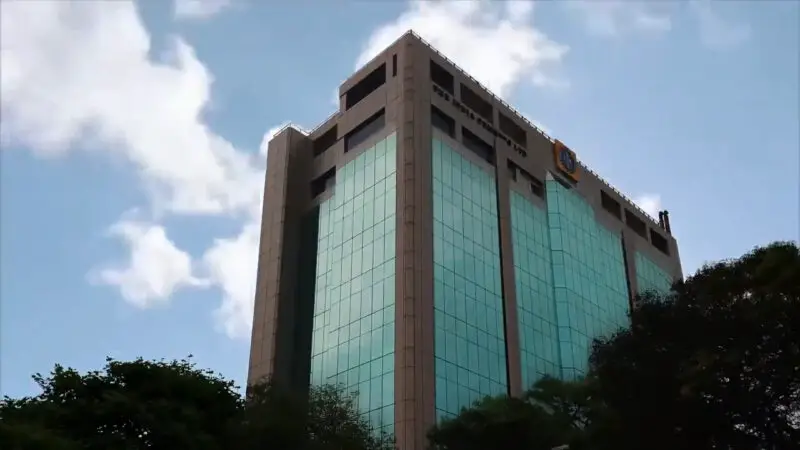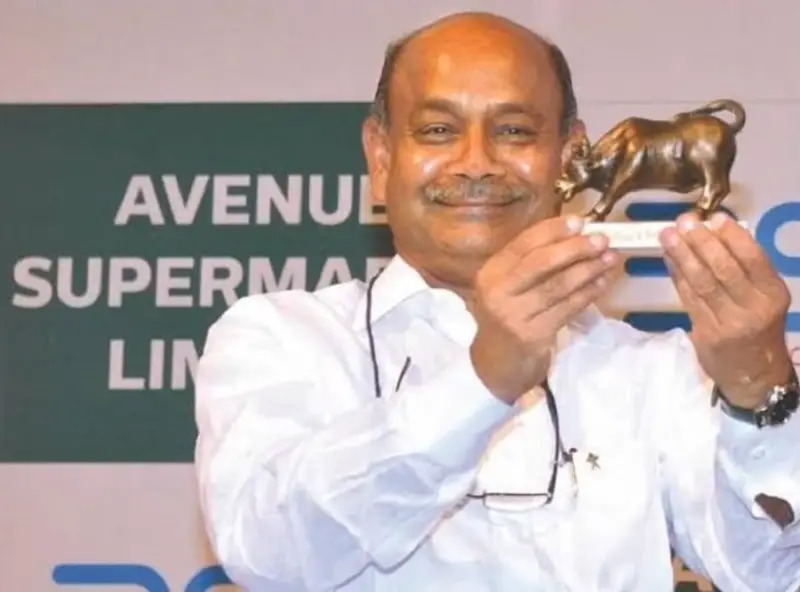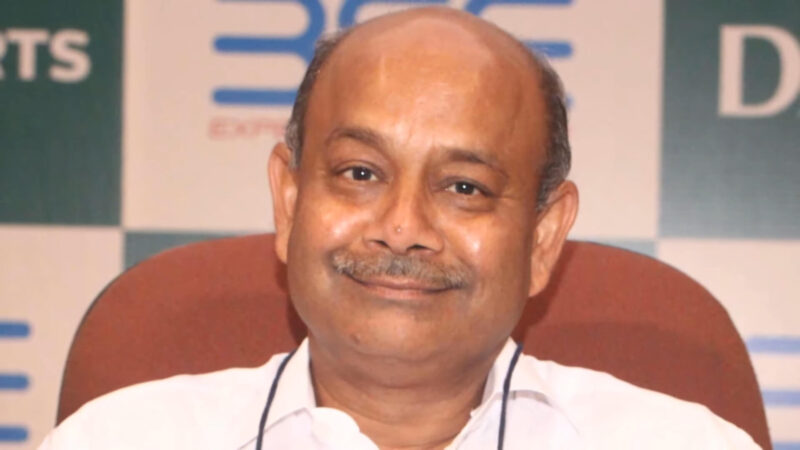Radhakishan Damani is one of those names that stands out when people talk about business and investing. What’s interesting about him is that he didn’t start out wealthy. He built everything from scratch, slowly growing his fortune over the years.
In 2024, his net worth hit an impressive $21.3 billion. How did he make it happen?
| Full Name | Radhakishan Shivkishan Damani |
| Birth Date | July 12, 1955 |
| Birth Place | Bikaner, Rajasthan, India |
| Age | 68 years |
| Net Worth (2024) | $21.3 billion |
| Source of Wealth | Retail (Avenue Supermarts Ltd – DMart), Investments |
| Nationality | Indian |
| Known As | Retail King of India |
| Key Investments | VST Industries, India Cements |
| Residence | Mumbai, Maharashtra, India |
What is Radhakishan Damani’s Net Worth?
Radhakishan Damani’s net worth in 2024 is estimated at around $21.3 billion, making him one of the wealthiest individuals in India. His wealth primarily comes from Avenue Supermarts Ltd, which runs the DMart retail chain.
DMart’s success has been massive, growing into a retail empire with hundreds of stores across India, offering products at competitive prices. The stock performance of Avenue Supermarts has significantly boosted Damani’s fortune.
In addition to his retail business, Damani has made strategic investments in several other companies. His stakes in firms like VST Industries and India Cements have also contributed to his rising wealth.
This combination of a booming retail chain and wise investments has made him a prominent figure in the business world, with his wealth continuing to grow year after year.
Table of Contents
ToggleWealth Building Through Stock Market Investments
Radhakishan Damani started his journey in the stock market, where he gained a reputation for being an intelligent and strategic investor. His early days involved identifying undervalued stocks and betting on them wisely.
During the 1990s, Damani made a fortune by short-selling stocks, particularly during the Harshad Mehta scam, which brought him significant profits.
Damani’s expertise in stock trading helped him accumulate a substantial amount of wealth before he decided to shift his focus to retail. He learned to invest for the long term, focusing on companies with solid fundamentals.
His ability to pick the right investments and hold onto them patiently has been a key factor in his financial success.
DMart Success and Expansion

DMart’s success comes down to its well-planned strategies and operational efficiency. The chain started in 2002 and has now grown to over 330 stores across India. One of its core strategies is the “Everyday Low Price” (EDLP) model, which focuses on offering competitive prices year-round.
DMart achieves this by keeping operating costs low, with only 7% operating expenditure, compared to the 10-12% industry standard.
Key Expansion Strategies
DMart follows a cluster expansion model, which means it focuses on deepening its presence in existing regions before moving to new areas. This allows the company to save on transportation costs, streamline its supply chain, and benefit from local vendor deals.
The stores are typically placed in locations with cheaper real estate, reducing rental costs. Owning most of its stores, instead of leasing them, further cuts down costs, allowing them to pass the savings on to customers.

Financial Growth
As of FY 2024, DMart’s revenue reached approximately ₹13,572 crore, a significant 17% increase compared to the previous year. The company’s ability to maintain such growth stems from its focus on fast-moving consumer goods and high-margin products.
Each DMart store generates an average revenue of ₹75 crore annually, which highlights the efficiency and profitability of their operations.
E-commerce and Omnichannel Approach
DMart has also recognized the importance of e-commerce, though it has been slower in this area compared to some competitors. The company’s DMart Ready service allows customers to shop online and pick up items from designated locations.
This approach caters to growing consumer demand for convenience without investing heavily in online infrastructure.
Operational Efficiency
Another key factor behind DMart’s success is its focus on efficient inventory management. The stores carry fast-moving products, which helps keep the turnover high and prevents unnecessary markdowns.
This focus on stock-keeping units (SKUs) further helps keep operational costs low and maintain profitability.
Key Investments: VST Industries and India Cements

Radhakishan Damani’s investment portfolio extends far beyond DMart. Two of his major investments include VST Industries and India Cements. VST Industries, a key player in the tobacco industry, has been one of Damani’s long-term holdings.
With a significant stake in the company, he has seen consistent returns due to its strong performance and stable market position.
India Cements is another important part of his portfolio. As a major player in the infrastructure and construction industry, India Cements aligns with Damani’s strategy of investing in sectors with long-term growth potential.
His investment in this company reflects his confidence in the booming construction industry, which continues to grow year after year.
Real Estate Holdings and Properties
Radhakishan Damani’s real estate investments are another major contributor to his wealth. His primary residence is a luxury property in Mumbai, reportedly worth over ₹1,000 crore. In addition to his home, he owns several other high-value properties, including a resort in Alibaug, a popular getaway location for India’s elite.
Damani’s real estate portfolio doesn’t stop at residential properties. He has invested in various commercial properties, some of which support his retail ventures. His real estate investments provide a steady stream of income and increase his overall net worth.
Family and Early Life

Radhakishan Damani was born in 1955 in Bikaner, Rajasthan, into a Marwari family. He grew up in modest conditions, living in a small apartment in Mumbai. His father worked on Dalal Street, the heart of India’s stock market, which later influenced Damani’s career. After his father’s passing, he took over his stockbroking business.
Damani is known for keeping his personal life private, but he is married and has three daughters. Despite his immense wealth, Damani is described as humble and low-profile, avoiding the limelight whenever possible.
Strategic Investment Approach
Radhakishan Damani follows a value-investing approach, focusing on companies with strong fundamentals rather than chasing short-term market trends. His strategy is rooted in patience and a long-term vision.
He looks for businesses with solid financial health, consistent earnings, and growth potential. This approach has served him well, as seen with his success in investments like VST Industries and India Cements.
Damani also takes a contrarian stance in many of his investments. He often invests in companies or sectors that may be out of favor with the market, betting on their long-term recovery. His ability to stay calm during market volatility and focus on the bigger picture has been key to his financial growth.
FAQs
How did Radhakishan Damani become so rich?
Radhakishan Damani built his wealth by starting in the stock market, where he became known for his value-investing approach. He made significant profits by short-selling during the Harshad Mehta scam in the early 90s.
After his success in the stock market, Damani founded DMart in 2002, which has since grown into one of India’s largest retail chains. His ability to invest in undervalued stocks and maintain long-term investments has contributed greatly to his wealth.
How many DMart stores does Radhakishan Damani own?
As of 2024, DMart operates over 330 stores across India. The number continues to grow as the company expands its reach in different cities and regions, focusing on providing affordable products to consumers.
What industries is Radhakishan Damani invested in?
Apart from retail with DMart, Radhakishan Damani is invested in a variety of industries. His portfolio includes tobacco (VST Industries), cement (India Cements), hospitality (Advani Hotels), finance (Sundaram Finance), and education (Aptech).
His approach focuses on stable, high-growth sectors, ensuring steady returns across different fields.
How did DMart grow so quickly?
DMart’s rapid growth can be attributed to its cost-efficient business model. By owning most of its stores instead of renting, DMart keeps overhead costs low, which allows it to offer competitive prices to consumers.
Its focus on value-driven retail and expansion into densely populated areas has made it a household name across India.
Last Words
Radhakishan Damani’s rise to the top is a clear example of hard work and smart decisions. He didn’t just rely on luck—he used his skills in stock trading and then built DMart from the ground up. His careful investments across various sectors show how important it is to think long term.
Damani’s story is one of starting small and growing big, proving that with the right approach, anyone can achieve great success.











